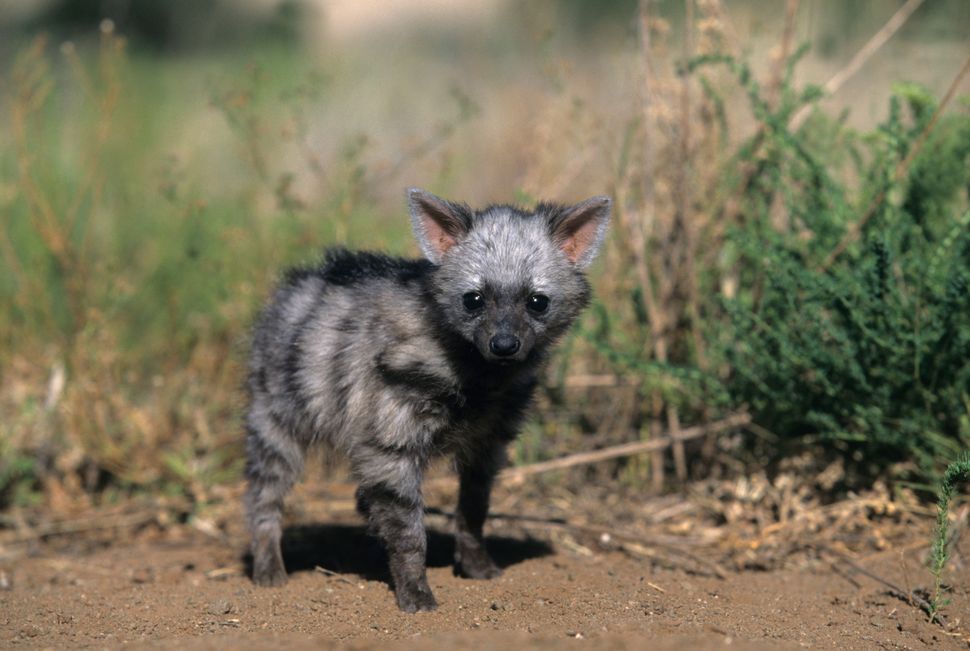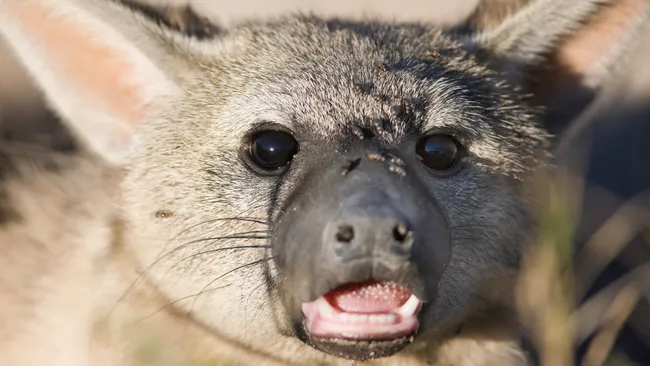Aardwolves — the “weird cousin” of the hyena family, known for their peg-like teeth and insect-only diet — are an evolutionary mystery, originating from a ghost lineage that scientists have yet to unravel.
Name: Aardwolf (Proteles cristatus)
Habitat: Savannah and grasslands in eastern and southern Africa
Diet: Termites and ants
Why They’re Fascinating: Unlike their carnivorous relatives, these solitary, nocturnal hyenas thrive on a diet almost exclusively composed of termites. Each night, they can consume up to 300,000 termites, using their sticky, elongated tongues to capture their prey.
Aardwolves’ tongues are broad and rounded, with large, hardened papillae—bumps that contain taste buds. The sand ingested along with the termites aids in their digestion.
Due to this specialized diet, aardwolves have flattened, peg-like teeth that are unsuitable for chewing meat. Although they retain fangs, these are used solely for defending their territory and cubs, rather than for hunting.
Aardwolves, whose name means “earth wolves” in Afrikaans, are the smallest of the four hyena species, measuring 22 to 31 inches (55 to 80 centimeters) in length and standing up to 20 inches (50 centimeters) tall. Unlike their relatives, the spotted hyenas (Crocuta crocuta) and striped hyenas (Hyaena hyaena), aardwolves do not live in packs, coming together only to mate and rear their young.
This solitary lifestyle is largely due to their diet of termites. Each night, they spend hours licking up termites, a foraging behavior that is not conducive to group living.

Aardwolves, whose name means “earth wolves” in Afrikaans, are the smallest of the four hyena species, measuring 22 to 31 inches (55 to 80 centimeters) in length and standing up to 20 inches (50 centimeters) tall. Unlike their relatives, the spotted hyenas (Crocuta crocuta) and striped hyenas (Hyaena hyaena), aardwolves do not live in packs, coming together only to mate and rear their young.
This solitary lifestyle is largely due to their diet of termites. Each night, they spend hours licking up termites, a foraging behavior that is not conducive to group living.
However, imagine delving into the depths of China’s ancient past, where fossils dating back 12 to 15 million years unveil a curious revelation: an extinct species of hyena named Gansuyaena megalotis. What makes this discovery truly remarkable is not just its existence but its peculiar dietary habits—it, too, feasted on termites. While not a direct ancestor of aardwolves, this ancient hyena sheds light on the mysterious origins of these insect-eating creatures, enriching our understanding of evolutionary pathways.
“In these fossils, we find the whispers of an enigmatic past,” remarked Jack Tseng, the study’s co-author and assistant professor of integrative biology at the University of California. “How does a lineage primarily adapted to a carnivorous diet spawn a ‘weird cousin’ that embarks on a divergent journey, specializing in termite cuisine?”
“Now, armed with the relics of time, we stand at the crossroads of discovery, poised to unravel the secrets of a ten-million-year odyssey,” Tseng mused, hinting at the untold tales that await exploration.
